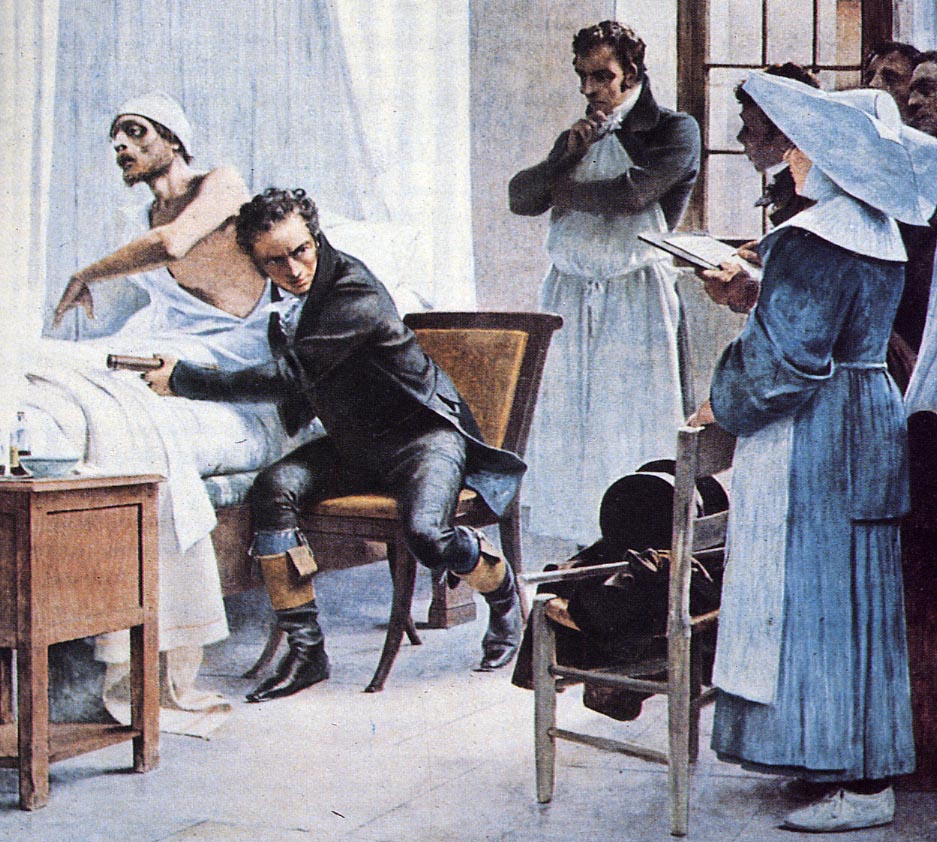Auscultation: Difference between revisions
No edit summary |
No edit summary |
||
| Line 1: | Line 1: | ||
{{CMG}} | {{CMG}} | ||
==Overview== | ==Overview== | ||
Revision as of 15:17, 26 July 2011
Editor-In-Chief: C. Michael Gibson, M.S., M.D. [1]
Overview
Auscultation is the technical term for listening to the internal sounds of the body, usually using a stethoscope; based on the Latin verb auscultare "to listen". Auscultation is performed for the purposes of examining the circulatory system and respiratory system (heart sounds and breath sounds), as well as the gastrointestinal system (bowel sounds).
History
The technical term was invented by René-Théophile-Hyacinthe Laënnec, a French physician, however the act of listening to body sounds for diagnostic purposes has its origin further back in history, possibly as early as Ancient Egypt. Laënnec's contribution was to document formally the procedure and relevant findings in his book "De l'auscultation médiate", published in 1819. Laënnec's contribution to the field went further, not only documenting clinical findings, but inventing the requisite device in the form of the first stethoscope, a wooden trumpet that allowed him to listen to female patients without having to place his ears to their breasts.

Electronic stethoscopes can enhance and improve the audio quality of auscultation and make it easier to differentiate the sounds. Developed in the early 1960s, an electronic stethoscope made by Francis Andries flew on the Space Shuttle in 1970's. The electronic stethoscope also allows for recording of sounds and transmission for the purposes of telemedicine, or remote diagnosis.
Technique
Auscultation is a skill that requires substantial clinical experience, and good listening skills. Doctors listen to three main organs/ organ systems during auscultation: the heart, lungs, and the gastrointestinal system. When auscultating the heart, doctors listen for abnormal sounds including heart murmurs, gallops, and other extra sounds coinciding with heartbeats. Heart rate is also noted. When listening to lungs, breath sounds such as wheezes and crackles are identified. The gastrointestinal system is auscultated to note the presence of bowel sounds.
Learning the accurate and reliable interpretation of auscultation findings has been improved by recent technological advances. There is a web site, www.andries.com with sample heart sounds and on line self teaching, the Auscultation Assistant[2], "provides heart sounds, heart murmurs, and breath sounds in order to help medical students and others improve their physical diagnosis skills".
See also
External links
de:Auskultation et:Auskultatsioon eu:Auskultazio id:Auskultasi nl:Auscultatie sv:Auskultation